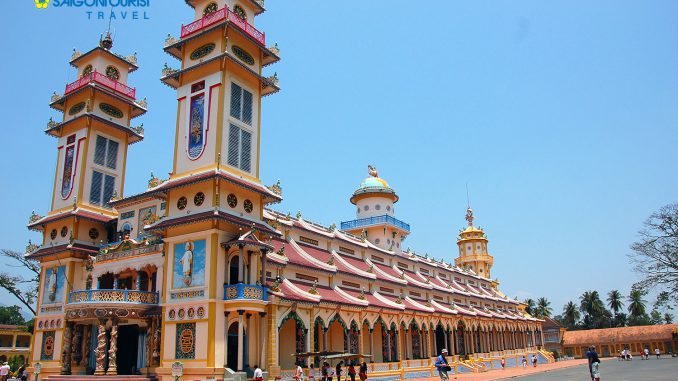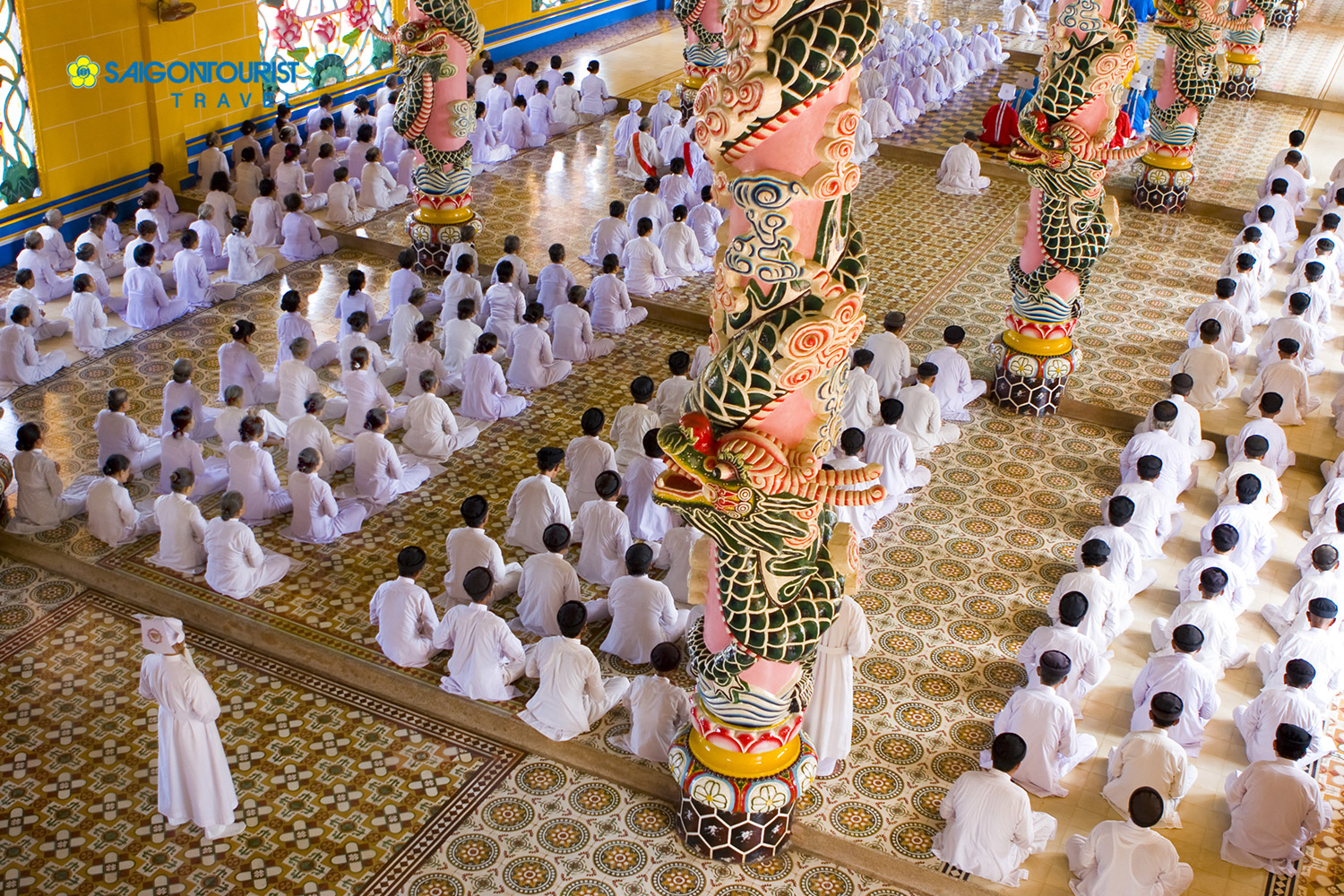
Near Tay Ninh town, in Long Hoa village, this temple is considered the greatest of all Vietnam’s Cao Dai temples. Founded in 1926, the Cao Dai Temple (Tòa Thánh Tây Ninh) complex functions as a Holy See for the Cao Dai religion (Caodaism), Vietnam’s third most popular belief system after Buddhism and Catholicism. Visitors are welcome at prayer sessions in the Great Temple.
As well as the Great Temple, the complex houses administrative offices, residences for officials and adepts, and a hospital of traditional Vietnamese herbal medicine that attracts people from all over the south for its treatments.
Prayers are conducted four times daily in the Great Temple (suspended during Tet). It’s worth visiting during prayer sessions (the one at noon is most popular with tour groups from HCMC) but don’t disturb the worshippers. Only a few hundred adherents, dressed in splendid garments, participate in weekday prayers, but during festivals, several thousand may attend.
It’s important that guests wear modest and respectful attire inside the temple, which means no shorts or sleeveless T-shirts.
Set above the front portico of the Great Temple is the ‘divine eye’. Lay women enter the Great Temple through a door at the base of the tower on the left. Once inside they walk around the outside of the collonaded hall in a clockwise direction. Men enter on the right and walk around the hall in an anticlockwise direction. Hats must be removed upon entering the building. The area in the centre of the sanctuary is reserved for Cao Dai priests.
A mural in the front entry hall depicts the three signatories of the ‘Third Alliance between God and Man’: the Chinese statesman and revolutionary leader Dr Sun Yat-sen (Sun Zhongshan; 1866–1925) holds an inkstone, while the Vietnamese poet Nguyen Binh Khiem (1492–1587) and French poet and author Victor Hugo (1802–85) write ‘God and humanity’ and ‘Love and justice’ in Chinese and French (Nguyen Binh Khiem writes with a brush, Victor Hugo uses a quill pen). Nearby signs in English, French and German each give a slightly different version of the fundamentals of Cao Daism.
The main hall is divided into nine sections by shallow steps, representing the nine steps to heaven, with each level marked by a pair of columns. Worshippers attain each new level depending on their years as Cao Dai adherents. At the far end of the sanctuary, eight plaster columns entwined with multicoloured dragons support a dome representing the heavens. Under the dome is a giant star-speckled blue globe with the ‘divine eye’ on it.

The largest of the seven chairs in front of the globe is reserved for the Cao Dai pope, a position that has remained vacant since 1933. The next three chairs are for the three men responsible for the religion’s law books. The remaining chairs are for the leaders of the three branches of Cao Daism, represented by the colours yellow, blue and red.
On both sides of the area between the columns are two pulpits similar in design to the minbar in mosques. During festivals, the pulpits are used by officials to address the assembled worshippers. The upstairs balconies are used if the crowd overflows.